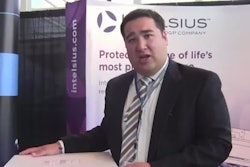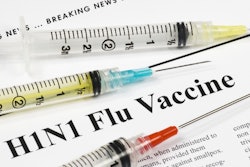
Where does all the data go? That was just one of many questions raised on Day 2 of the Cold Chain and Temperature Management Global Forum, Chicago, September, 27, 2012.
We can create the data, we're just not sure what we are going to do with it, was the tone of the session.
With no central gateway, where will all this information be stored? And who will be able to access it? And how much will others in the supply chain be able to access about my production schedules?
John Roberts of GS-1, strongly suggested that the GS-1 system of standards should be used to improve visibility and efficiency in the supply chain. GS-1 is based on the philosophy identify, capture and share. Any production information on the package should be included in the widely recommended 2D Matrix barcode, including: lot, expiration date, serial number, production date, quantity, etc.
While the FDA has not officially commented on standards for pharma track and trace, recent movement with the UDI (Unique Device Identifier) for medical devices could be a blueprint for the future.
Input from industry in the FDA UDI proposal was welcomed and the agency says it designed the program to build on "current standards and systems already in use by some companies" to "minimize industry costs and expedite implementation."
This bodes well for GS-1, now in use in 110 countries.
But don't confuse a proposed U.S. ruling in the med device market for global harmony in pharmaceutical serialization. One participant presented the scenario of 200 drugs manufactured in 40 countries for sale in 100 countries. That is a lot of data to generate, store and pass. And a lot of "customization" necessary to satisfy certain countries-even the State of Florida has separate rules and regs.
Even a major distributor talked about not being able to send product down for New York to Florida in case of a shortage, because the New York-based product had not been prepared properly.
And while GS-1 wholeheartedly supports 2D matrix, other countries are still calling for stacked linear codes, with "legacy" readers flooding the landscape.
One speaker mentioned the whole reason for serialization, patient safety, will be lost if pharmacies and hospitals don't invest in new scanners and software.
Even the DEA, only concerned with controlled substances, is overwhelmed by the wide variety of technology they encounter with different manufacturers securing dangerous drugs.
Panelists felt this time California, "the fourth largest economy in the world," would stick with 2015 deadlines.
But one participant tossed off the threat of California cracking down in 2015, commenting, "they don't have the funds to do anything."
Most participants said only a federal mandate would get them to really get in gear. And that does not address the inconsistent data requirements around the globe.
So, in short, to answer the opening question, "how close are we to track and trace?" The answer seems to be miles and miles away. And according to this conference, only a Federal mandate, with standards, can pave the way. Until then, the industry seems comfortable with the "wait and see" attitude so prevalent today.
We can create the data, we're just not sure what we are going to do with it, was the tone of the session.
With no central gateway, where will all this information be stored? And who will be able to access it? And how much will others in the supply chain be able to access about my production schedules?
John Roberts of GS-1, strongly suggested that the GS-1 system of standards should be used to improve visibility and efficiency in the supply chain. GS-1 is based on the philosophy identify, capture and share. Any production information on the package should be included in the widely recommended 2D Matrix barcode, including: lot, expiration date, serial number, production date, quantity, etc.
While the FDA has not officially commented on standards for pharma track and trace, recent movement with the UDI (Unique Device Identifier) for medical devices could be a blueprint for the future.
Input from industry in the FDA UDI proposal was welcomed and the agency says it designed the program to build on "current standards and systems already in use by some companies" to "minimize industry costs and expedite implementation."
This bodes well for GS-1, now in use in 110 countries.
But don't confuse a proposed U.S. ruling in the med device market for global harmony in pharmaceutical serialization. One participant presented the scenario of 200 drugs manufactured in 40 countries for sale in 100 countries. That is a lot of data to generate, store and pass. And a lot of "customization" necessary to satisfy certain countries-even the State of Florida has separate rules and regs.
Even a major distributor talked about not being able to send product down for New York to Florida in case of a shortage, because the New York-based product had not been prepared properly.
And while GS-1 wholeheartedly supports 2D matrix, other countries are still calling for stacked linear codes, with "legacy" readers flooding the landscape.
One speaker mentioned the whole reason for serialization, patient safety, will be lost if pharmacies and hospitals don't invest in new scanners and software.
Even the DEA, only concerned with controlled substances, is overwhelmed by the wide variety of technology they encounter with different manufacturers securing dangerous drugs.
Panelists felt this time California, "the fourth largest economy in the world," would stick with 2015 deadlines.
But one participant tossed off the threat of California cracking down in 2015, commenting, "they don't have the funds to do anything."
Most participants said only a federal mandate would get them to really get in gear. And that does not address the inconsistent data requirements around the globe.
So, in short, to answer the opening question, "how close are we to track and trace?" The answer seems to be miles and miles away. And according to this conference, only a Federal mandate, with standards, can pave the way. Until then, the industry seems comfortable with the "wait and see" attitude so prevalent today.



















